Event Summary
Transport + Infrastructure: Improving stations and places | Summary
As well as connecting people and places, transport has the power to shape development by unlocking sites and driving economic growth, panellists at Place North West’s Transport + Infrastructure event said.
The event, held last week, provided an overview of transport and infrastructure projects across the North West, as well as insight into how to take advantage of the momentum of the ‘active travel’ movement, while exploring what train stations could look like in a post-Covid world.
Watch the full video recording of the event here.
The event was sponsored by Deetu, Waterman and CMS and hosted by Place North West editor Sarah Townsend.
Presentation – Remapping HS2 in Manchester
Rob Naybour, founding partner of Weston Williamson + Partners, said his company’s alternative proposal for an HS2 hub at Manchester Piccadilly could save billions and unlock development potential around the station by taking the network underground.
Naybour said his company’s proposal could “prevent the loss of developable land” that may result under the existing designs, which propose an expansion of the station at ground level.
By creating an underground station with 400-metre long platforms, land at surface level could be used to create public realm and construct new buildings, Naybour said.
Under the existing proposals, Manchester’s HS2 hub would be a terminus station – a style of station that is falling out of fashion, according to Naybour.
“There is a drive to increase through-capacity, as it is so much more efficient,” he said.
Weston Williamson’s Piccadilly proposal aims to incorporate Northern Powerhouse Rail, the project that aims to improve east-to-west connectivity in the North, by allowing trains to pass through Manchester to Leeds via Rochdale and Bradford.
Under the existing proposals for an HS2 link at Piccadilly, passengers would have to change trains if they wished to carry on their journey to Leeds.
Naybour’s firm is also drawing up proposals for an HS2 hub in Liverpool and is in the process of evaluating potential locations.
There are five possible sites on the table that could unlock land for up to 3,800 homes and 300,000 sq ft of commercial space, according to his firm’s research.
Of the proposed locations, which include the existing Liverpool Lime Street station, Naybour said those closer to the city’s waterfront are more “financially lucrative”.
“These proposals should be thought about in a regenerative context,” he said.
Panel one – transport as an economic driver
Rob Naybour, founding partner, Weston Williamson + Partners
David Moore, partner, CMS
Laura Langridge, architect, Knight Architects
Tim Foster, head of policy, strategy, economics and research, Transport for the North
Naybour noted that other countries are “taking a broader view of the benefits of infrastructure” and the UK is lagging behind in this. “At the moment we are looking a bit dated,” he told the first panel session of the event.
Naybour said he is a proponent of a holistic approach to creating and upgrading infrastructure and warned that, while there is clear need for immediate transport improvements in the region, mistakes could be made if projects are not properly thought out. “People seem to be in a terrible hurry to get going and I support that but we need to be careful.”
However, Naybour’s fears of rushing into things may be unfounded, according to Moore, who said the UK’s planning and decision-making processes are too slow.
“At some point we need to decide what we are going to do and just stop taking about it and do it,” he said.
Moore also suggested that the Government should be more confident in investing in transport infrastructure to reap the “enormous rewards” that come with it.
“The Government doesn’t look at the full economic benefits of [a transport] scheme to the wider economy,” he said. “Metrolink has been transformative for Manchester and I suspect the real benefits were much, much greater than suggested [in planning].”
Langridge agreed with Naybour that developers and authorities should take a holistic approach to designing transport infrastructure.
“We need to look at who projects are serving and why are they important,” she said. “Often, we don’t address the wider concerns. It has to fit into people’s lives and provide a benefit. We need to take a broad view and let that inform projects from the get-go.”
Langridge also called for better integration of different modes of transport into city strategies, as seen in other European countries such as Holland, and added that public transport in general needs to be cheaper, more comfortable and more convenient.
Foster said that Transport for the North is in the process of identifying projects that could be accelerated to boost the economy, but added that the Government buy-in is paramount.
“We need long-term certainty in terms of rail investment. Having that certainty about investment and the projects coming forward is going to be key if we are to maximise the benefits of investment,” he said.
Foster added that rail projects are about more than transport connectivity, and expressed a desire for them to truly drive regeneration, as well as “connecting cities with fast, frequent services on an integrated network”.
“We have invested heavily in understanding local plans and spatial plans and recognising the full regeneration impacts of schemes.”
Presentation – Stockport’s £550m “gateway to the North”
Cllr David Meller, Stockport Council’s member for economy and regeneration, said the council wants to reinvent the town’s “outdated” train station as part of a 12-year revamp announced earlier this year, and create a “gateway to the North” that would unlock untapped potential around the station and improve the town as a whole.
Meller added that there is a “car-dependent culture” in Stockport that the council wants to move away from, but said it could only do that if the station is redeveloped to boost capacity and unplug bottlenecks.
The council is also lobbying to be part of the HS2 network so that Stockport doesn’t miss out on the opportunities that come with connections with London.
“For years, I feel that Stockport hasn’t punched its weight but I feel we are getting there. We have got the key components but we need to do more. The station represents our ambition,” Meller said.
Panel two – Futureproofing the transport network
Cllr David Meller, cabinet member for economy and regeneration, Stockport Council
Nicola Kane, head of strategic planning, insight and innovation, Transport for Greater Manchester
Harbinder Birdi, senior partner, Hawkins\Brown
Graham Sant, executive director, BWB Consulting
Mellor said it was important to give consumers confidence to use public transport again after the pandemic and suggested that Stockport’s desire to have the Metrolink extended to the town could boost appetite.
“It is incumbent on us to deliver a system that works and is easy to use to get people out of cars so we can start to grapple with issues of climate change,” he said.
However, he said that some people are still struggling to see the benefits of active travel and that the council’s plan to create a cycle corridor from Stockport to Manchester had been problematic due to the amount of traffic on the A6.
“We are constrained by road space and geography but we can’t let that get in the way.”
Kane said the aim of the Greater Manchester Transport Strategy, the latest version of which was published this year, is to increase the amount of trips made by sustainable modes of transport such as walking and cycling to 50% from less than 40% currently, but she admitted that this is a “pretty big ask”.
“It will require a combination of the right land use planning and ongoing investment in walking and cycling,” she said.
Kane added that using the existing train network to expand the Metrolink is the “next big part of the transport network”.
“We are blessed in Greater Manchester that we have a good rail network but we have quite a few hurdles to jump over first in terms of improving the network. But the potential is enormous.”
Bike and e-scooter hire schemes are also being looked at as ways to boost active travel and link up the train, tram and bus networks, Kane added.
She said there is the potential to repurpose train stations so that they to better meet the needs of communities, a point that was echoed by Birdi.
Birdi said that in future, stations could feature workplaces and places to meet, transforming them into community hubs rather than simply transport hubs.
“Rail asset landlords are scratching their heads post-Covid in terms of design and asking how big stations need to be, look and function. There is less need for more platforms and larger ticket halls but they still have space that can be developed,” he said.
Beyond the station vision, Birdi said there needs to be a push to create better environments to encourage people to walk that goes beyond providing basic infrastructure.
“We have to think about how we are going to be moving in the city and need to create streets that function without the car. If you have great streets with good lighting and active frontages, people will walk and the private sector will reap the benefits of higher footfall.
“[Humans] are not designed to be in a car, but car manufacturers think otherwise and that is the battle we have.”
Like Moore in the previous panel, Sant said the speed of implementing transport plans is a barrier to progress.
“Doing business in this country is long and drawn out and we have to wait exorbitant periods of time to get much-needed schemes off the ground. And, by the time they are done, new technology has come around and we are delivering old systems that should have been delivered much earlier.”
Sant also called for a more “aspirational” approach to development in general that could produce more attractive environments.
“For years, we have been redeveloping business districts and residential areas and the focus has been on financial return.
“We spend a lot of time designing concrete and steel structures and, while there is a lot of architectural prowess in that, I would like to see a bigger movement towards creating enticing environments for people.”


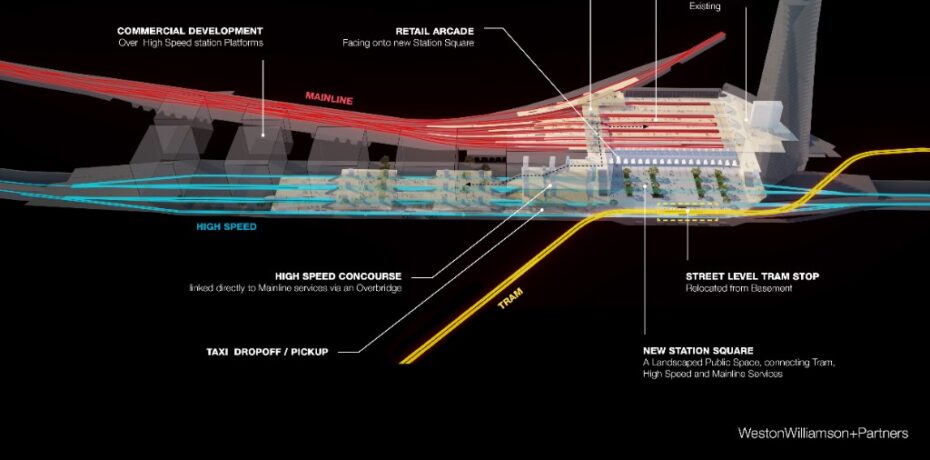

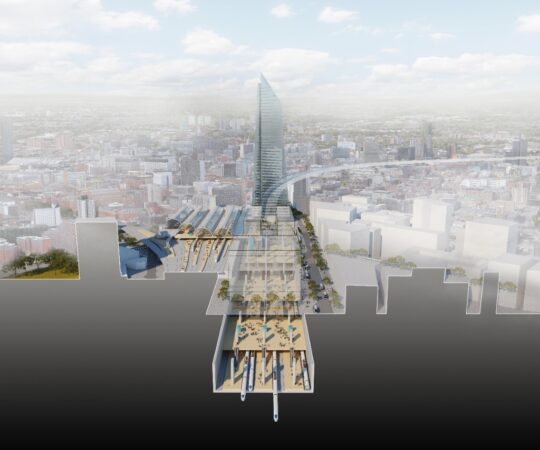
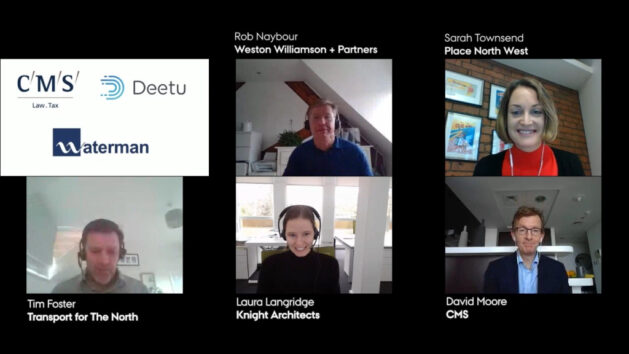
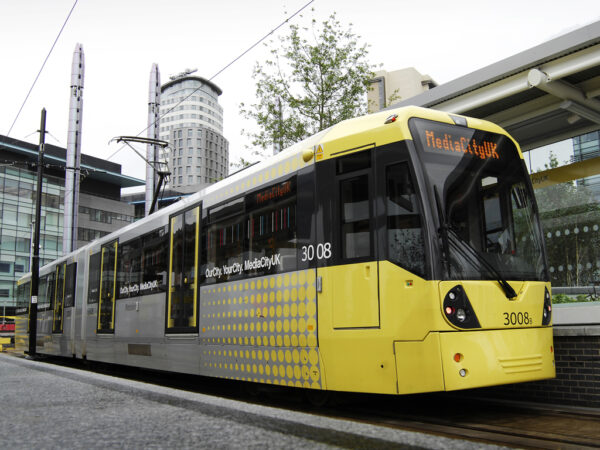
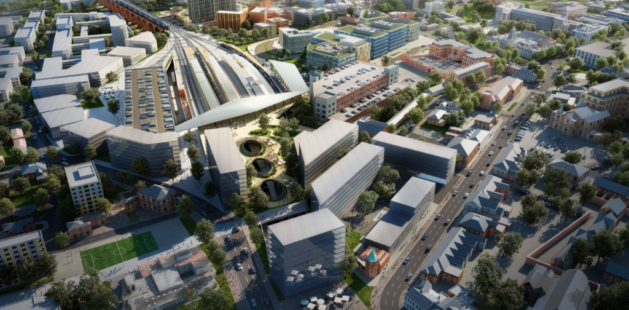

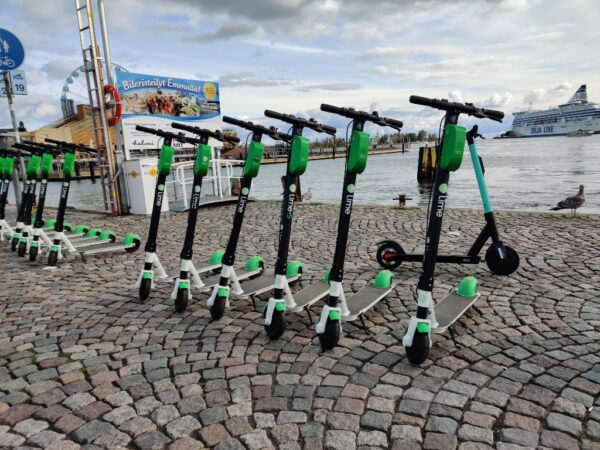
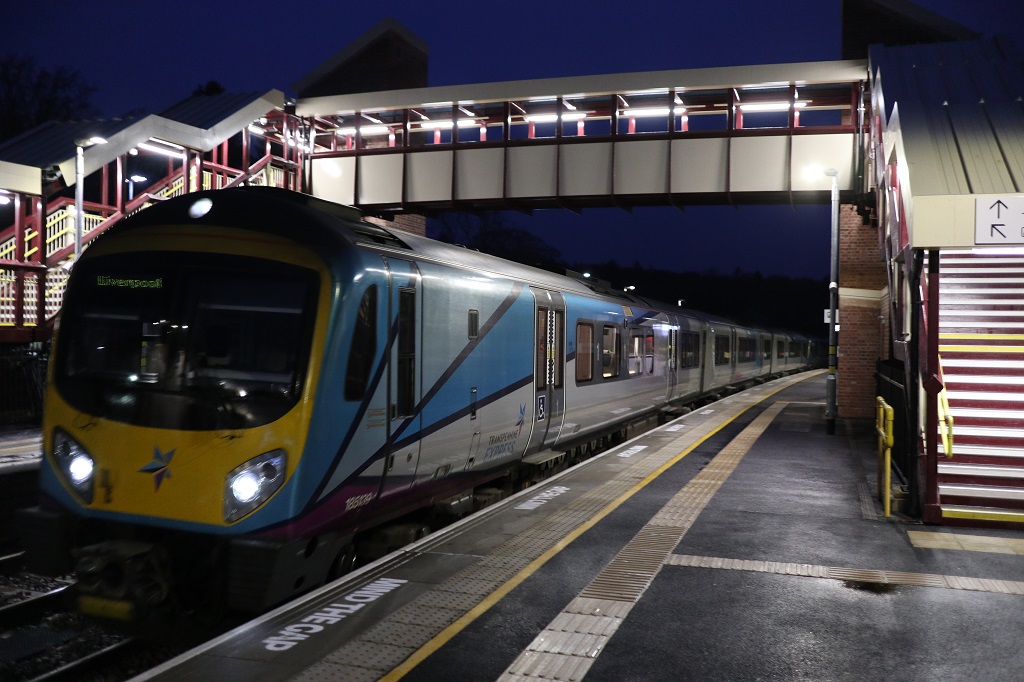
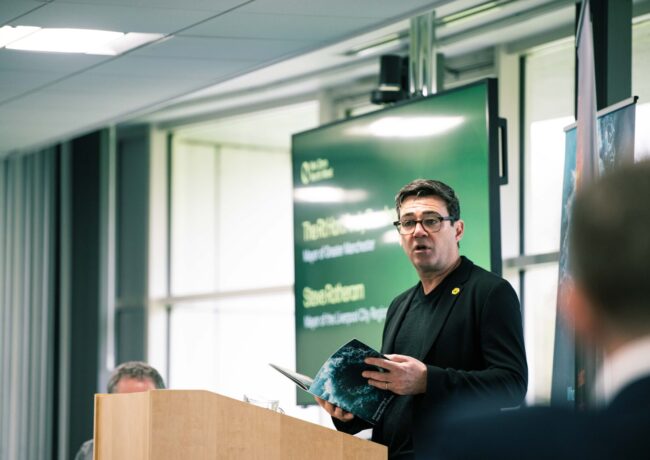
There are rumblings that the Eastern leg of HS2 is not going to happen. If this is the case then Leeds would need to be connected via Piccadilly to Birmingham and London. It would then make sense for Victoria to be the Manchester stop linking Liverpool and Leeds on HS3 and Victoria or thereabouts would be where the two lines met. This would leave Sheffield served by neither. Perhaps HS3 should bypass the mill towns on either side of the Pennines and go through Sheffield to Leeds. Someone will lose out, that’s for sure.
By Elephant
“For years, we have been redeveloping business districts and residential areas and the focus has been on financial return. ”
I would politely suggest that this has been the UK’s problem for some time.
Looking at everything from base financial ROI perspective simply means only existing strong performing areas can expect quality development. Less strong areas get development that detracts from value, locking them out of real improvements permanently, regardless of any underlying potential.
While businesses themselves need to turn a profit, public realm, amenity and development as a whole shouldn’t be expected to. The returns on these should instead be measured in sustainability, environment, long term economic and strategic impact, and impact on people.
Also, re the underground station in Manchester. I may be missing something here, but aren’t “air rights” to build on top of a cheaper surface station just as possible as on top of an underground one?
By Mike